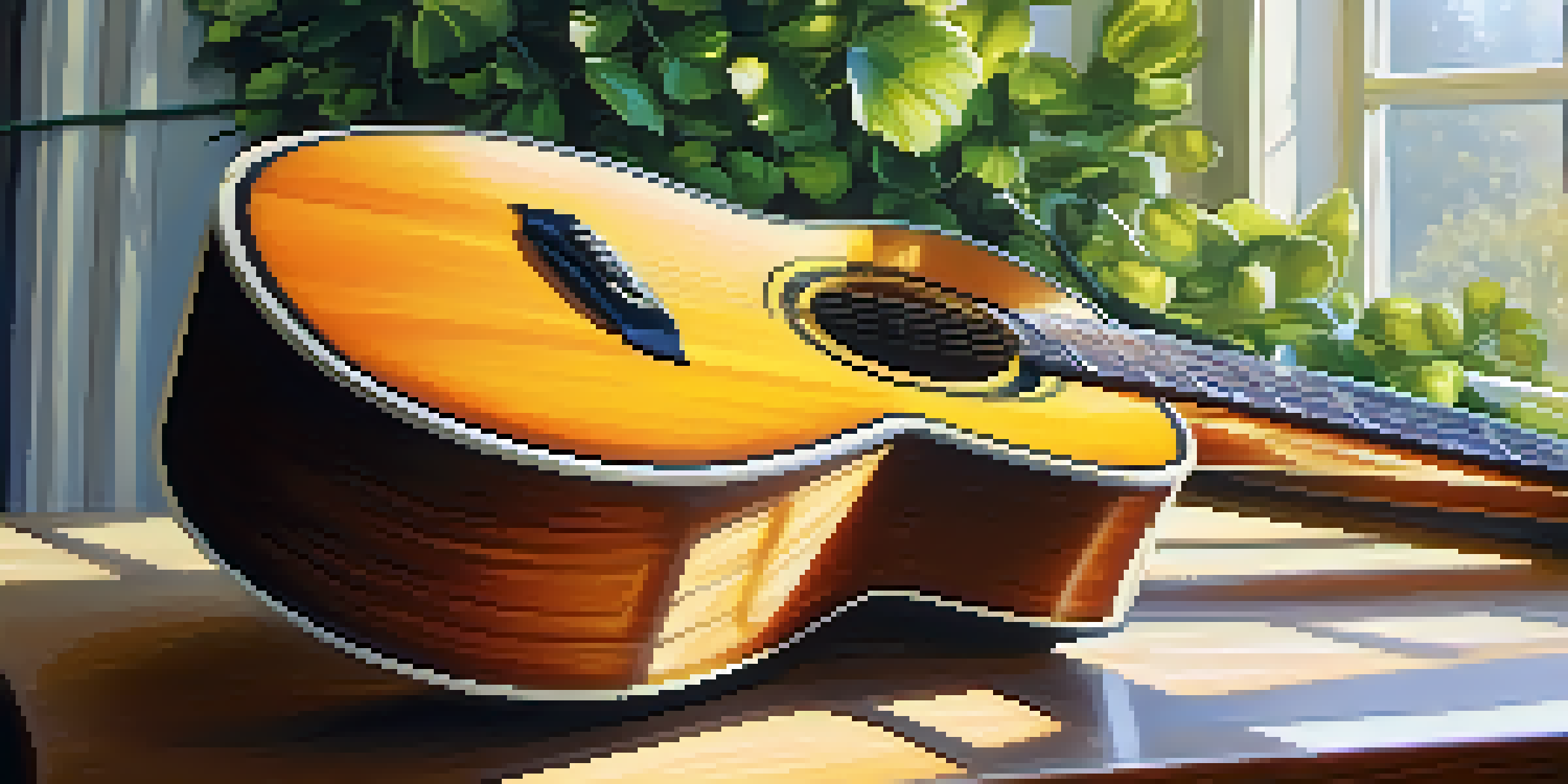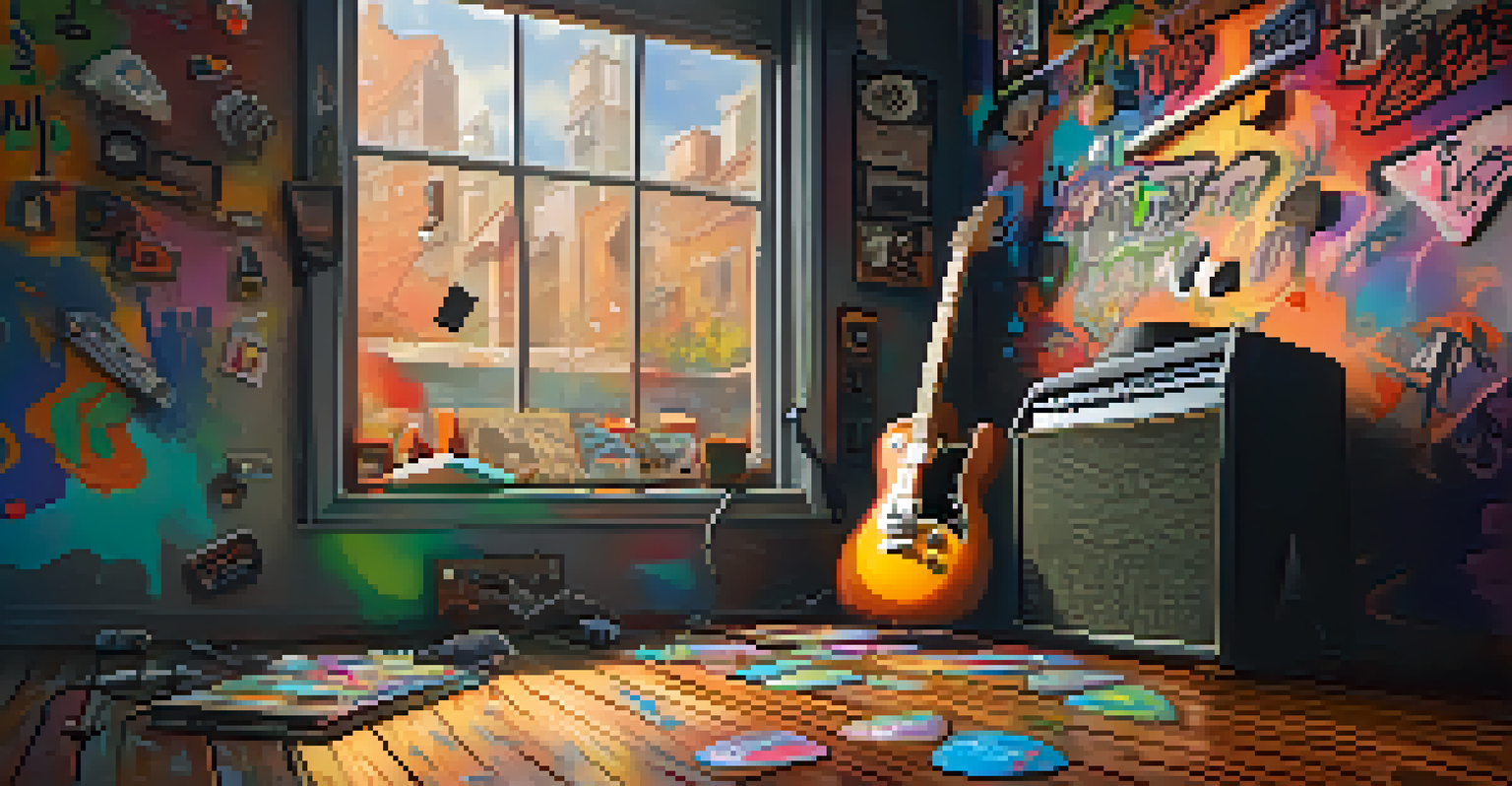Budgeting for Your First Guitar: Costs Beyond the Price Tag

Understanding the Initial Investment in a Guitar
When you're ready to buy your first guitar, it's easy to focus solely on the price tag. However, the cost of a guitar is just the tip of the iceberg. Whether you're eyeing an acoustic or electric model, remember that quality often comes with a price, but the right choice will pay off in the long run.
Investing in yourself is the best investment you will ever make. It will not only improve your life, it will improve the lives of all those around you.
Consider that a decent beginner guitar can range anywhere from $100 to $500, depending on the brand and quality. This initial investment is crucial because a well-made instrument can inspire you to practice and improve. Just like choosing a reliable pair of running shoes, investing in a quality guitar will provide comfort and encourage your musical journey.
So, before you swipe your card, take a moment to think about what kind of sound and playability you're looking for. Research various brands and models, read reviews, and even try them out in a store if you can. The more informed you are, the better your first purchase will be.
The Importance of Accessories in Your Guitar Budget
Once you've snagged your guitar, don’t forget about the essential accessories that come with it. Items like a tuner, picks, a strap, and a case can add up quickly, often costing anywhere from $50 to $200 altogether. These are not just extras; they significantly enhance your playing experience and protect your investment.

Think of accessories as the icing on your musical cake. A good tuner ensures you're always in harmony, while a comfortable strap allows for hours of practice without strain. Plus, a solid case or gig bag can prevent damage and keep your guitar safe when you're on the move.
Invest Wisely in Your First Guitar
Choosing a quality guitar as your first instrument can inspire your playing and enhance your musical journey.
To make the most of your budget, consider purchasing bundles that include several accessories together. Many music stores offer starter packs that can help you save money while ensuring you have everything you need to get started.
Ongoing Maintenance and Care for Your Guitar
Your guitar will need regular maintenance to keep it in top shape. This includes changing strings, adjusting the setup, and even cleaning the body. Over time, these costs can accumulate, so it's wise to factor them into your budget from the get-go.
The beautiful thing about learning is that no one can take it away from you.
On average, changing strings can cost around $10 to $20, depending on the type you choose. If you're not comfortable doing this yourself, you might want to budget for professional setups, which can range from $50 to $100. Think of it as a tune-up for your musical instrument, ensuring the best sound quality.
Taking care of your guitar will not only prolong its life but also enhance your playing experience. Just like a car needs regular oil changes, your guitar deserves some TLC to keep it performing at its best.
Consider Learning Tools and Resources
As a beginner, it's important to invest in learning tools and resources to help you along your musical journey. Whether it’s online courses, instructional books, or apps, these resources can vary in cost, often ranging from free to several hundred dollars. The right guidance can dramatically speed up your learning process.
Imagine trying to bake a cake without a recipe; it would be a challenge, right? Similarly, having structured lessons can help you grasp the fundamentals of playing the guitar. Platforms like YouTube offer free tutorials, while dedicated apps can provide a more organized learning experience.
Don't Skip Essential Accessories
Investing in accessories like tuners and cases is vital for protecting your guitar and improving your overall experience.
Don't hesitate to explore different learning options. Some people thrive in a classroom setting, while others prefer self-paced online courses. Investing in your education will pay off as you develop your skills and confidence.
Exploring the Cost of Lessons: In-Person vs. Online
One of the biggest decisions new guitarists face is whether to take lessons and where to find them. In-person lessons can range from $40 to $100 per session, while online courses may offer a more affordable alternative, sometimes under $20 a month. Weighing the pros and cons of each can help you find what suits your learning style and budget best.
In-person lessons provide personalized feedback, which can be incredibly helpful for beginners. However, they also require travel time and commitment. On the other hand, online lessons offer flexibility, allowing you to learn at your own pace, but may lack that immediate interaction.
Ultimately, the choice depends on your preferences and financial situation. A combination of both could also be beneficial, such as starting with online courses and transitioning to in-person lessons as you progress.
Budgeting for Jamming and Performance Opportunities
Once you've learned the basics, you might want to share your music with others. Participating in jam sessions or open mic nights can be a thrilling experience, but they often come with costs. Whether it's travel expenses, entry fees, or refreshments, these additional costs can sneak up on you, so budget accordingly.
Imagine the excitement of playing alongside others, but also consider the logistics involved. If you're traveling to a jam session, factor in fuel or public transport costs. Even if the event is free, you might want to bring some snacks or drinks to share, which adds to your expenses.
Budget for Lessons and Upgrades
Allocating funds for lessons and future equipment upgrades is crucial for continued growth and skill development as a guitarist.
Embracing these experiences can enhance your skills and confidence, making the extra costs worthwhile. Just like any hobby, the social aspect of music can greatly enrich your journey as a guitarist.
Planning for Future Upgrades and Expansion
As you progress on your guitar journey, you might find yourself wanting to upgrade your equipment. Whether it’s a new guitar, amplifier, or pedals, setting aside a portion of your budget for future purchases is a smart move. This not only keeps your passion alive but also ensures you have the right tools to continue improving.
Think of it like climbing a mountain; the right gear can help you reach new heights. Upgrading to a higher-quality guitar or adding effects can open up a world of sound and creativity. It can be tempting to splurge on the latest gear, but having a plan will help you avoid impulsive purchases.

Start small by setting aside a monthly amount for upgrades. This approach allows you to enjoy your current guitar while also dreaming about what’s next. It’s all about keeping the excitement alive and ensuring your budget aligns with your growth as a guitarist.